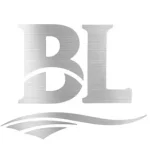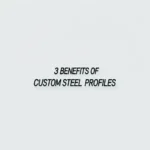AR500 lasts longer in sliding abrasion but is less forgiving to bend and weld; AR400 is friendlier in the workshop and still tough for chutes, liners and buckets. Use the rules below to pick, bend and weld without surprises.
Numbers that matter
- Hardness: AR400 ~400 HBW; AR500 ~500 HBW.
- Trade-off: Harder → better sliding wear; harder → more sensitive to forming/welding heat input.
Selecting the grade
- Sliding abrasion: favor AR500 for flat liners/deflectors.
- Impact + abrasion: AR400 (or AR450) balances life and crack resistance.
- Complex shapes: AR400 bends tighter radii with less risk.
Bending without cracks
- Bend transverse to rolling direction where possible.
- Condition flame-cut edges before forming to remove HAZ microcracks.
- Inside radius (guide): AR400 ≈ 3–5t; AR500 ≈ 6–10t; increase for thick plate or parallel-to-grain bends.
- Warm forming ~100–150 °C can help on AR500; avoid overheating (softens plate).
Welding practice
- Low-hydrogen (GMAW solid, FCAW-G, SMAW E7018/E80XX-H4).
- Preheat (typical): AR400 100–150 °C; AR500 150–200 °C (adjust to thickness).
- Moderate heat input, stringers, interpass ≤200 °C. Cool under insulation.
- Butter with ductile layer; cap with hard-facing for severe zones; avoid across bend lines.
Quality checks
- Verify hardness on MTC and spot-check with portable tester.
- Inspect outer bend surface; dye-pen critical bends.
- UT/MT high-stress weld areas; watch for underbead cracking.
Spec (copy/paste)
- Plate: AR400 (HBW 360–430) or AR500 (HBW 460–540) as required
- Size: 12 mm × 2000 × 6000; tolerances per mill standard
- Bend: Min inside radius AR400 ≥ 4t, AR500 ≥ 8t; bend transverse
- Weld: Low-H; preheat 150 °C (thickness-based); interpass ≤200 °C
- Docs: MTC EN 10204 3.1 with hardness values
Baoli Engineering Team · Reviewed Oct 31, 2025




